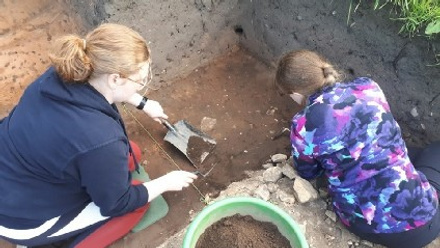In archaeology the ability to measure the location of a site, artefact, or earthwork is essential.
Nowadays many archaeological sites use either GPS or Total Station for site survey. Differential GPS can record points of circa 1cm accuracy levels in three dimensions, and can also allow real time ‘on the fly’ measurements to be taken allowing large areas of land to be surveyed. The total station is an electronic theodolite and Electronic Distance Measurer that records point locations by measuring distance and angles.
This course will teach the required skills that are used on excavations and other sites for locating features using GPS and total Station.
The course will also go further to enable participants to learn the complex skills of archaeological topographic survey, recording a site with a combination of both objective and subjective survey methods.
Topographic Survey Training day course aims to help participants learn about the theory, science, uses, methods, logistics, deployment, data collection, data processing, and reporting, behind archaeological topographic surveying.
The course will include a mixture of classroom and field based working. This is a field based training course consisting of hands-
The course will include:
- Introduction and theory, working in grids, mapping in 2 D and 3D, working with co-
ordinates and heights, ‘X,Y, & Z’, - Pythagoras and Right Angles,
- Levelling heights in ‘Z’,
- Laying out a trench from Ordnance Survey co-
ordinates - ‘X & Y’, - Introduction to Total Station & GPS,
- Undertaking the survey -
data collection, including control points, total station survey and cross- sections with a dumpy level. - Introduction to mapping in 3D with a Dumpy Level.
- Downloading data,
- Introduction to 2D mapping,
- Creating a Digital Terrain Model in GIS.
Students will meet at at King John’s Palace in Clipstone. The training will take place at the site of the Palace, and a survey will be undertaken in Sherwood Forest National Nature Reserve. Full details of the site will be provided nearer the time, but will be within 2 miles of King John’s Palace (transport from the classroom sessions to the field will be provided if required).
The survey training will begin at King John’s Palace, former royal heart of Sherwood Forest, and then move to the Sherwood Forest National Nature Reserve where earthworks from Medieval Holloways and ridge and furrow to Second World War Military dug-
As well as being a training survey, this course will undertake real archaeological research, mapping and recording earthworks as part of a level two survey of archaeological features as part of the Sherwood Forest National Nature Reserve Archaeological Survey.
Ancient track-
Learning to survey with Total Station at King John’s Palace
As well as offering the best in archaeological training and support, the topographic survey course is tailored towards enabling attendees to fulfil requirements of the Archaeological Skills Passport.

